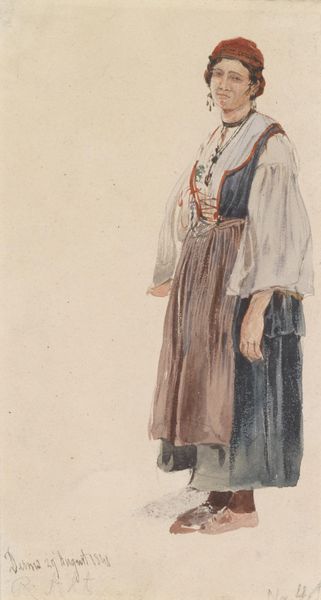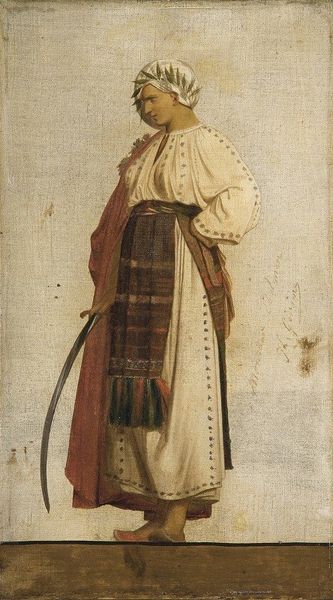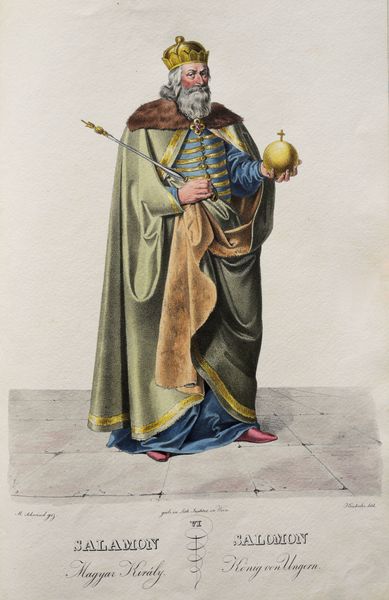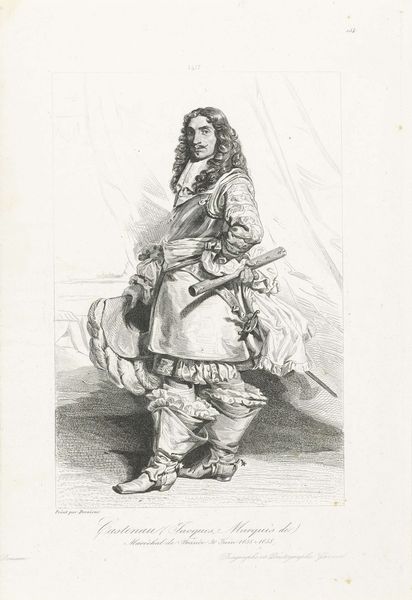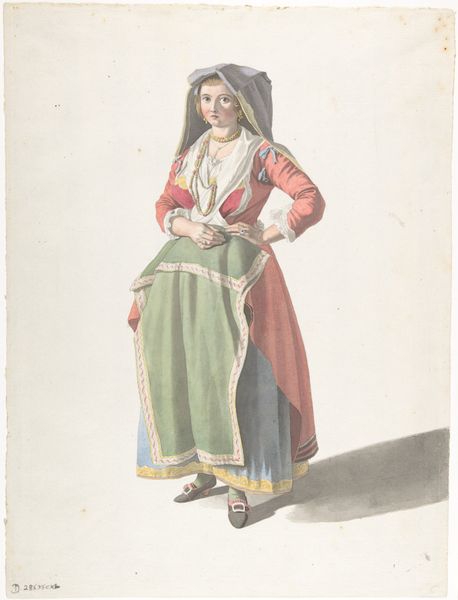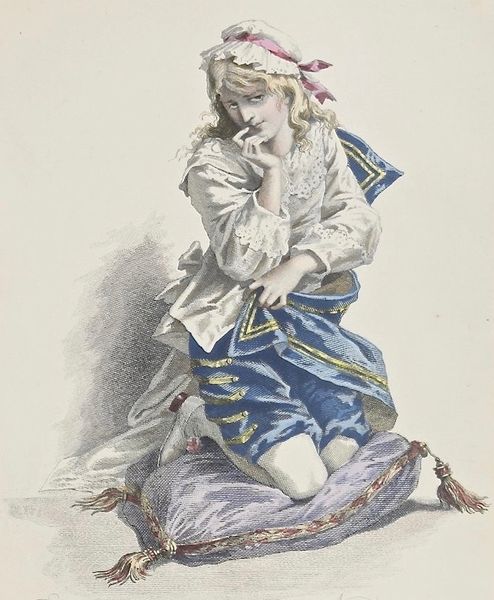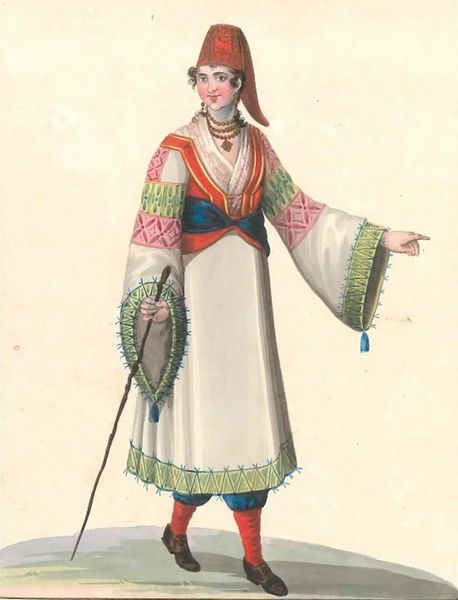
gouache, watercolor
#
portrait
#
gouache
#
gouache
#
figuration
#
oil painting
#
watercolor
#
romanticism
#
orientalism
#
costume
#
watercolour illustration
#
genre-painting
#
watercolor
Copyright: Public domain
Curator: Charles Gleyre painted "Turkish Woman" in 1834, a watercolor and gouache work that embodies the Orientalist style popular at the time. What's your immediate take? Editor: Dreamy. She feels both present and a world away. It’s as if she's stepped out of an old novel filled with silken whispers and hidden courtyards. Curator: Gleyre was part of a generation of artists fascinated by the "exotic" cultures of the Middle East and North Africa. How do you think that shapes what we see here? Editor: I feel a slight voyeuristic tension. Her gaze isn’t challenging, more… reserved. We are looking, but are we really *seeing* her, or our own projection of what a 'Turkish Woman' should be? It reminds me how the art world often mirrored and reinforced colonial viewpoints, particularly of female bodies and cultures. Curator: Precisely. The detail given to her costume - the fabric patterns, the gold embroidery, all invite the viewer to marvel at the craftsmanship, which often overshadows the individual herself. She becomes a representation, almost an object. Editor: Yes. Though Gleyre’s skill with light and texture can’t be denied, I find myself wanting to know *her* story, rather than just admire her clothes. It feels incomplete. As a watercolor, there's an ethereal feel – as though this 'Turkish woman' could just dissolve like pigment in water. Does this resonate with some notion of fragility or transience projected on her? Curator: It might, especially given how genre paintings from the period idealized and essentialized cultural identity, so it's plausible that is intended, if somewhat unconsciously, here. Her "Turkishness," whatever that even meant to Gleyre, might indeed seem fragile to him. It really makes you think about who is controlling the narrative here. Editor: Absolutely. I think even without consciously digging, we can appreciate that while her image feels compelling, one also starts thinking of her power and its subtle commentary regarding issues of cultural perception and identity politics then… and now. Curator: Exactly, and it reveals a lot about not only Gleyre, but also his historical milieu, as well as what museums show, what they value, and even *how* they value it. Editor: Nicely said, I'll probably never see another "Orientalist" painting quite the same way again.
Comments
No comments
Be the first to comment and join the conversation on the ultimate creative platform.
